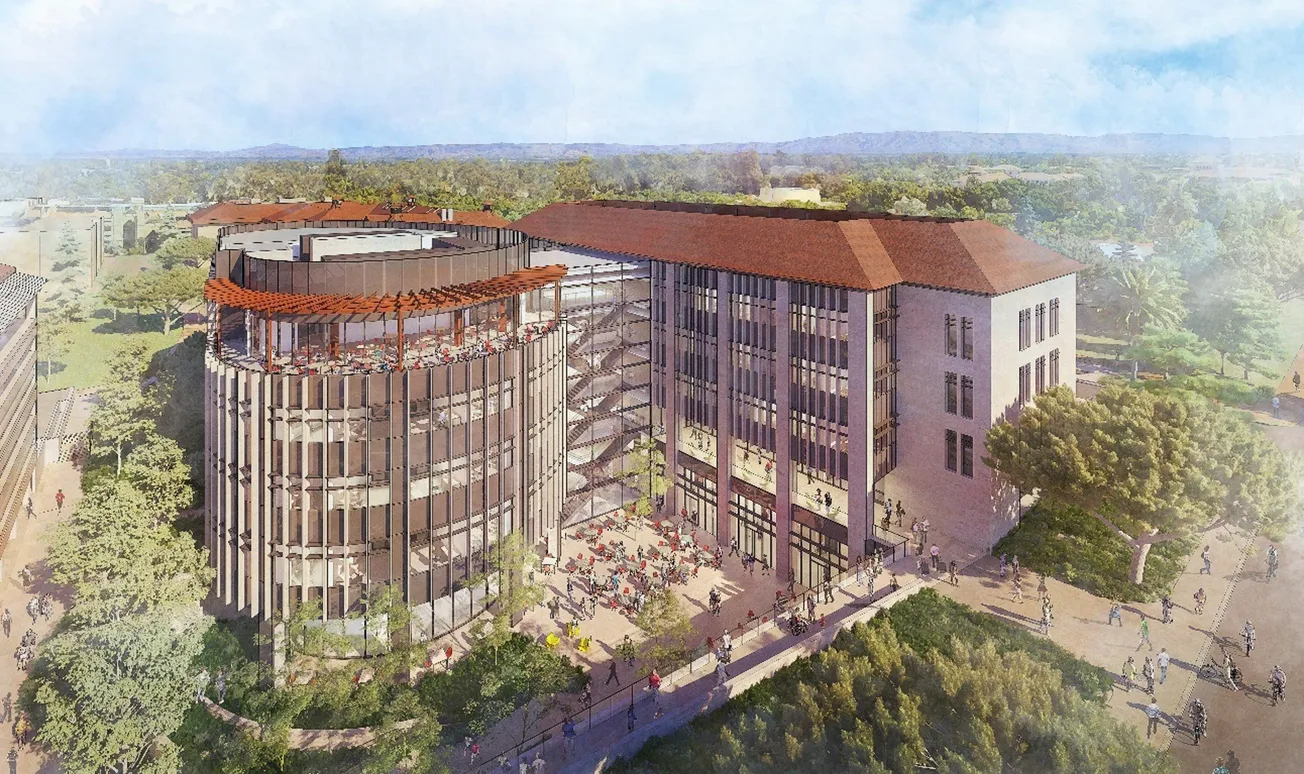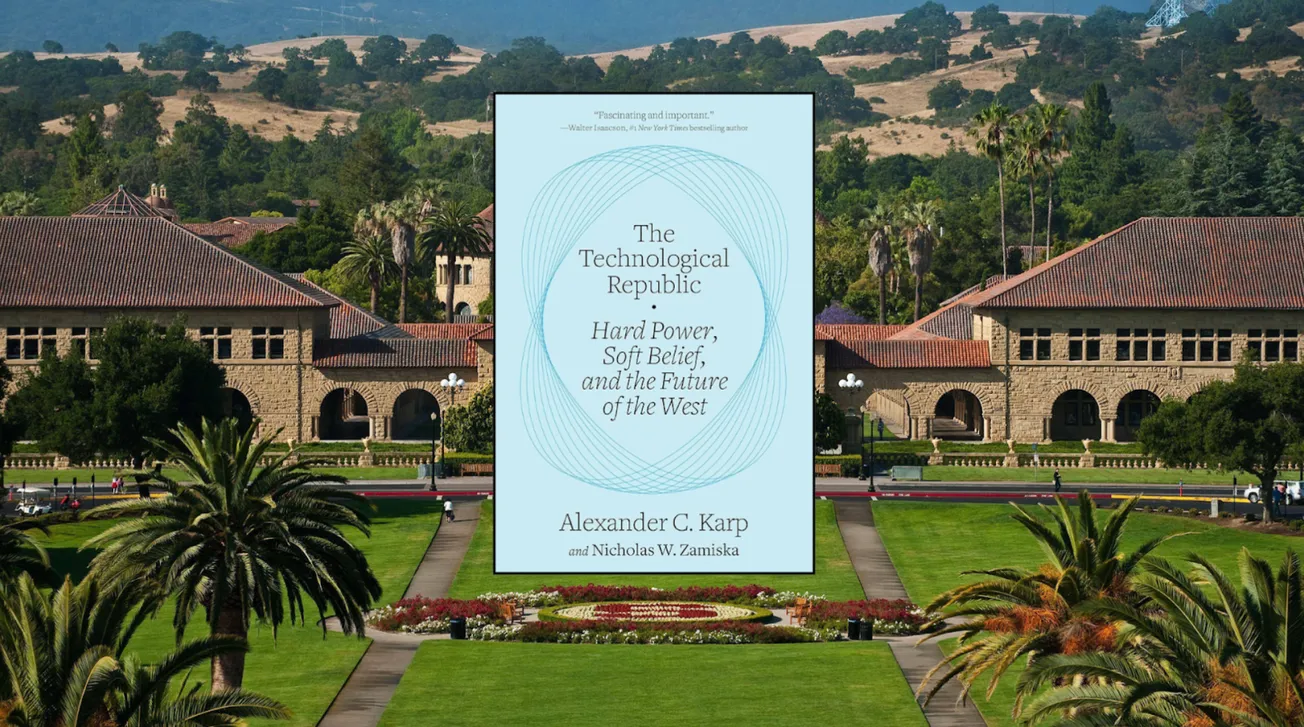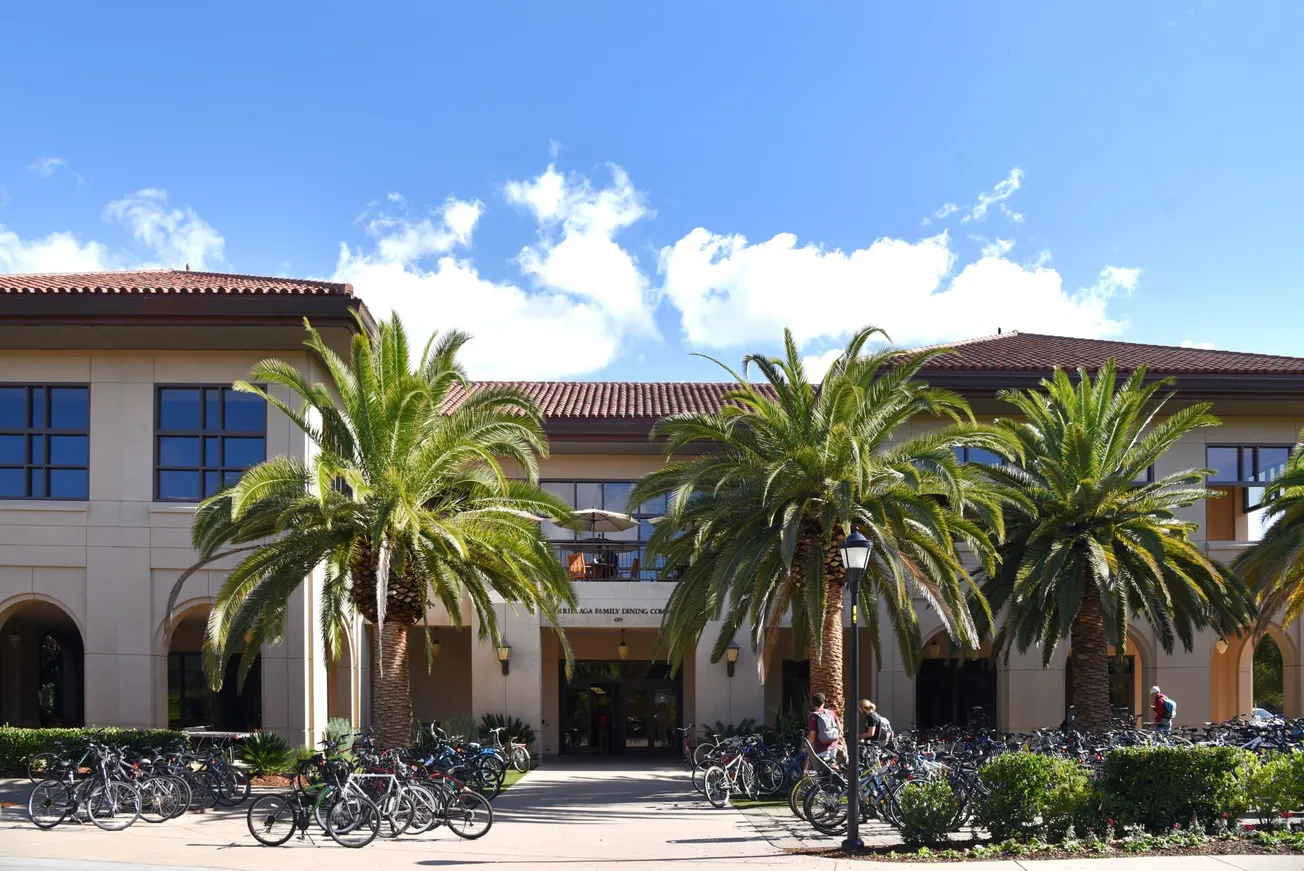Table of Contents
Like a spaceship that crashed into paradise, the newly unveiled Computing and Data Science building (CoDA) is utterly alien to the campus it occupies. This latest addition to a pattern of imposing, monolithic constructions signals Stanford’s decline in aesthetic sensibility, reflecting a philosophical impoverishment that relegates beauty to a distant afterthought behind calculated functionality.
CoDa building architects claim they blend traditional and futuristic looks, with one wing featuring a similar tan facade and red tiles to Main Quad, and the other a glass and metal lattice meant to resemble a spacecraft. What was dubbed an homage to Stanford’s interdisciplinary mission presents as two discordant towers awkwardly joined in aesthetic conflict.
The building characterizes what German philosopher Martin Heidegger called "the forgetting of being." With its lack of character and aggressive geometries, it reflects a metaphysical stance that reduces reality to nothing more than quantifiable physical matter, which has no value beyond its utility. The building doesn’t complement its landscape but rather imposes its cold and technological logic onto its surroundings.
The same can be said for the Escondido Village Graduate Residences (EVGR). The massive, high-rise four-building complex with over 1300 units is one of the most recent housing developments, opening in 2020. The maze of hallways features uniform greyish carpeting, harsh lighting, and nearly blank walls on identical floors. No character, no way to facilitate organic interactions between residents, just a sterile space designed for function and efficiency. The buildings themselves are almost identical, named A, B, C, and D—a truly imaginative nomenclature.
Consider how these modern buildings compare to Stanford’s founding architecture. A century before EVGR came Toyon Hall, featuring Mediterranean arched loggias and cloistered walkways, which open into a grand common space, still used for opera practices. During the same era, Roble Hall was constructed, with its Beaux-Arts columns and ivy draping. Both are still iconic for their vivid character and engender a sense of pride and reverence. The same can be said for the refined elegance of Branner or Lakeside dining, as compared to the utilitarian Arillaga Family Dining Commons.
This architectural degradation should matter not just for us, but for the sake of those who will inherit this campus long after we are gone. Everyone from Plato and the ancients through to the Stanford family understood beauty to be just as fundamental as truth or goodness. A student from a century in the past, and a century hence, will share the same experience of beauty when walking into the Memorial Church. That feeling of reverence is what gives way to a connection with the institution, its history, and its unique character. In a hundred years, if Stanford is dominated by characterless buildings, why would a student feel anything more than a merely utilitarian attachment?
We are shaped by our surroundings more than our disenchanted modern worldview permits. A student walking through Main Quad unconsciously intuits lessons of proportion and harmony at a human scale. The student condemned to CoDA or EVGR’s confines gets a different lesson: for mechanical beings in a mechanical universe, beauty—and along with it, transcendence—is dispensable.
In the words of English philosopher Sir Roger Scruton, 'Beauty is an ultimate value—something that we pursue for its own sake, and for the pursuit of which no further reason need be given.” Abandoning beauty because we cannot quantify its importance in cost-benefit terms has not liberated us, but rather impoverished us.









